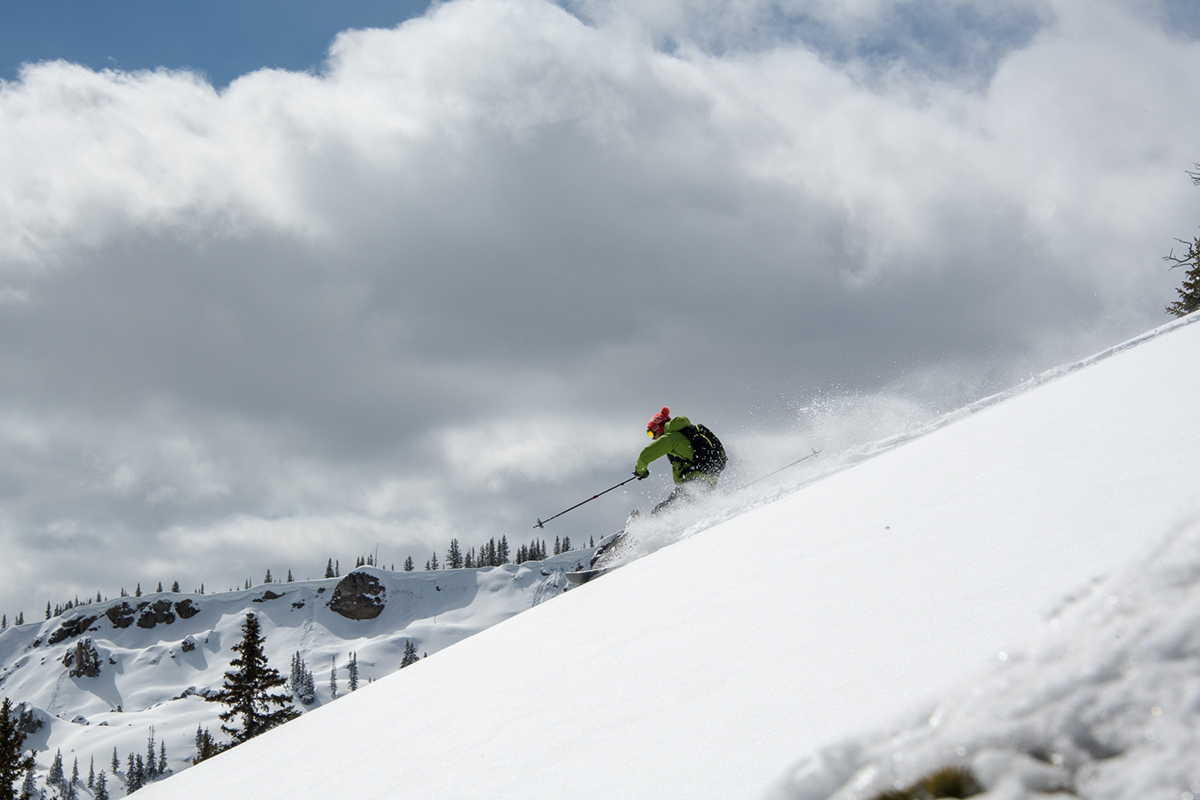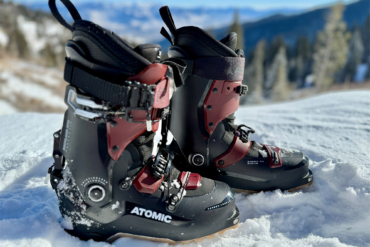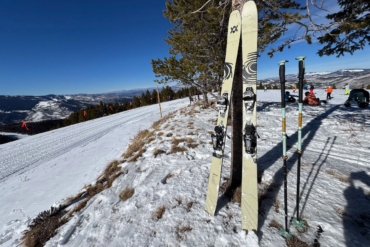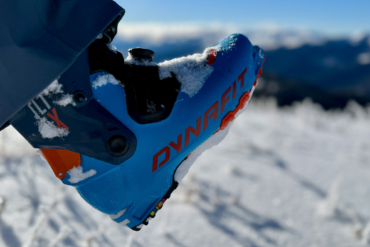Custom skis can help you become a better skier and cost less than you think.
I love craftsmanship and design. Bikes, cars, furniture, art — it doesn’t matter. The human soul translated through the maker’s hands and onto a product sings to my inner artist. But custom skis? I wasn’t sold.
I’m a passable skier. Sure, I’ve skied around Rainier, traversed the Sawtooths in winter, and held a season pass every year for some 10-plus years. But unlike my kids, I didn’t grow up on the slopes. I didn’t mop up skills through years of one-upmanship at the local hill with my friends. Rather, I came late to the sport, well into midlife. My style was rough-hewed from learning not to fall, which I now do well enough.
My technique is in a rut, but I want to get better. I want to keep up with my kids, who are pitching off the groomers and into bumpy territory. But does that mean I need custom skis? Well, maybe.
Interview With Romp Skis
I reached Caleb Weinberg on a Wednesday morning just before noon. A former ski-racer himself, he was with his kids at a local ski race, helping build the next generation of Weinberg skiers. Weinberg stomped the snow off his boots as he found a quiet spot in the lodge to share more about Romp.
Brothers Morgan and Caleb Weinberg grew up ski racing out East. Searching for deeper snow, the two moved out to Colorado, slaying powder between slinging hammers as carpenters. But the market was slow. To pass time, they sicced their skills on building boards for themselves and close friends. The response was overwhelmingly Yaassss! Two years later, Romp was born and the brothers Weinberg started selling Romp skis to the public.
My first question to Weinberg? I asked if custom skis have a place in an intermediate skier’s garage. Or are custom skis reserved for the hardcore skier who’s worked up to the pinnacle of quality and build? In short, what’s the big difference?
Well, performance, quality — only the most important things. “And aspirations,” Weinberg added. “A big brand will sell a ski that could be suited for an expert 120-pound woman … or a 220-pound male beginner. A custom ski can be optimized to match an expert skier’s needs, or even help an intermediate skier grow into the skier they want to be.” He had my attention.
But there’s a fine line between form and function in a custom ski. Romp offers every ski in both a stock and custom version, and builds every ski in one of three materials: countervail (dampening carbon fiber), ultralight carbon fiber, and a poplar-core fiberglass.
Because ski designs need to be thoroughly tested, Romp’s stock shapes and lengths are pre-set. “But we can tweak the flex, camber, and rocker of a stock model to not only match a skier’s ability but allow the skier to improve their skills.” Weinberg believes that a custom ski is usually the best ski for everyone.
Romp Custom Skis: The Buying Process
The conversation then got personal, and it was time to start the build process for my own pair of custom skis.
Weinberg started with tracking my name, which Romp prints underfoot on each ski that leaves the shop. Next came my height, weight, and age.
We then had a frank discussion about my style of skiing (or rather, lack of it.) This is a good time to drop any guarded insecurities about how good a skier you think you are. I fumbled through what I’ve skied, what I typically ski, and what I aspire to ski.
We spoke about how my skis track and how I make turns. Weinberg asked about my preferred camber, rocker, and flex and schooled me on the physics of an effective edge.
By now, we’ve established I’m not a ski nut. But Romp doesn’t care if you don’t understand what these things mean. “Very few skiers — even expert skiers — know what they like in a ski,” he said. They just know that they like it. “It’s our job as builders to listen to the skier’s style and aspirations so that we can build a ski that matches their needs.” Weinberg also shared I’m probably a better skier than I think I am.
Custom Ski Decision: Romp Stock 100
After a deep 30-minute discussion, Weinberg repeated what he heard and identified what he thought would be the right ski for me. The answers I provided helped Weinberg dial in a pair of 100’s that will replace my current ski. He’ll build it to suit my weekend runs at the hill but make it light enough to carry uphill when I point my skis into the backcountry.
The skis will have medium stiffness underfoot but be a touch softer at the tips and trimmed with a bit of a sidecut to satiate my hankering to push off the groomers.
Plus, I get to decide on the final graphics. Romp offers 50-plus designs, from photos to subtle to outrageous, and even custom (should I want to provide the graphic myself), ensuring I’ll have something to overthink.
Graphics aside, these custom additions can be even more beneficial for skiers like me who haven’t accumulate hundreds of flight hours on the slopes in their youth. Technology and dialed fit can fast-track a moderate skier’s ability to the next stage. And custom skis cost less than you’d think.
Off the shelf, a pair of stock Romps cost $750, putting them right in line with a mass-produced ski. Start choosing lighter materials, changing rocker/camber, shapes, and custom graphics, and the price can be anywhere from $1,000 to $1,500. This is still less than some of the other custom ski shops and comparable to the very highest-end off-the-shelf skis.
So yes, a custom ski is an investment. But it’s perhaps one that pays bigger dividends for the skier who hasn’t grown up with the sport or makes the occasional trip to the slopes. A custom ski can yield increased satisfaction and better technique.
And as for my skis? I’m still deciding on graphics and will report out in a few weeks after they leave the Crested Butte shop for Idaho.













